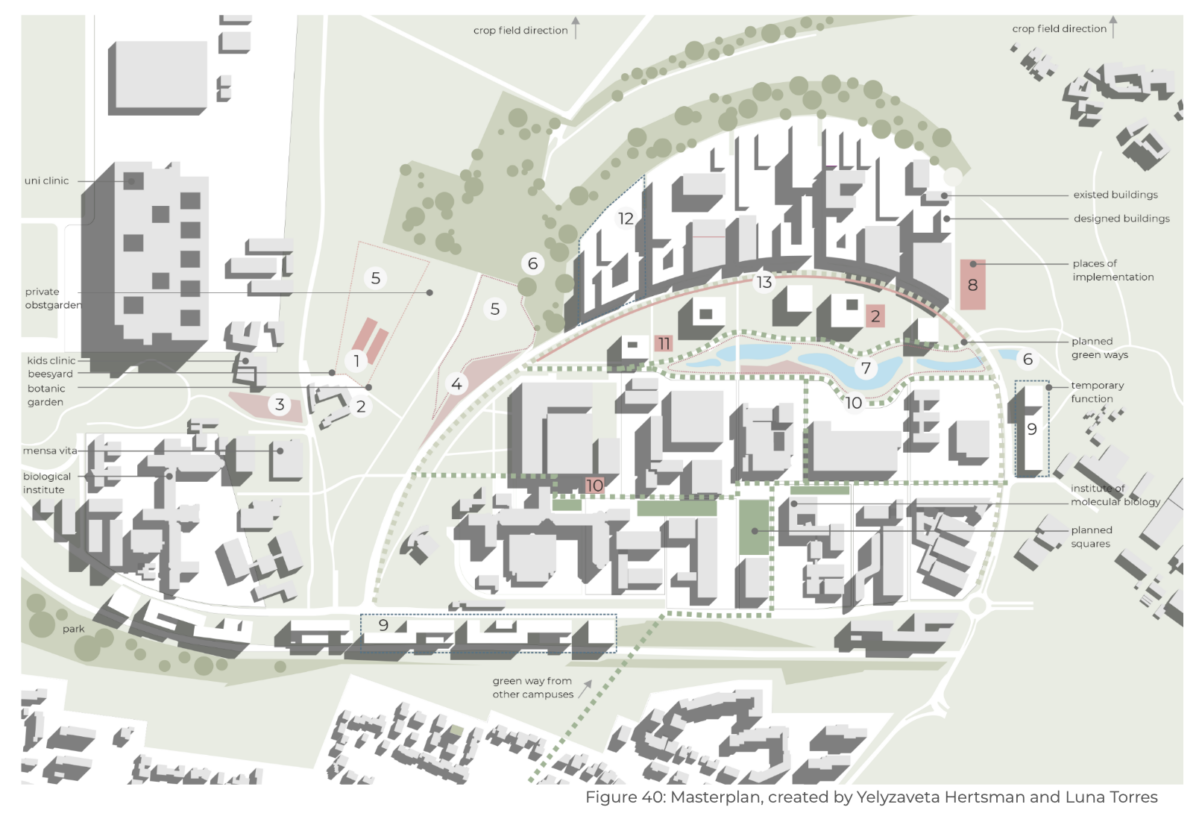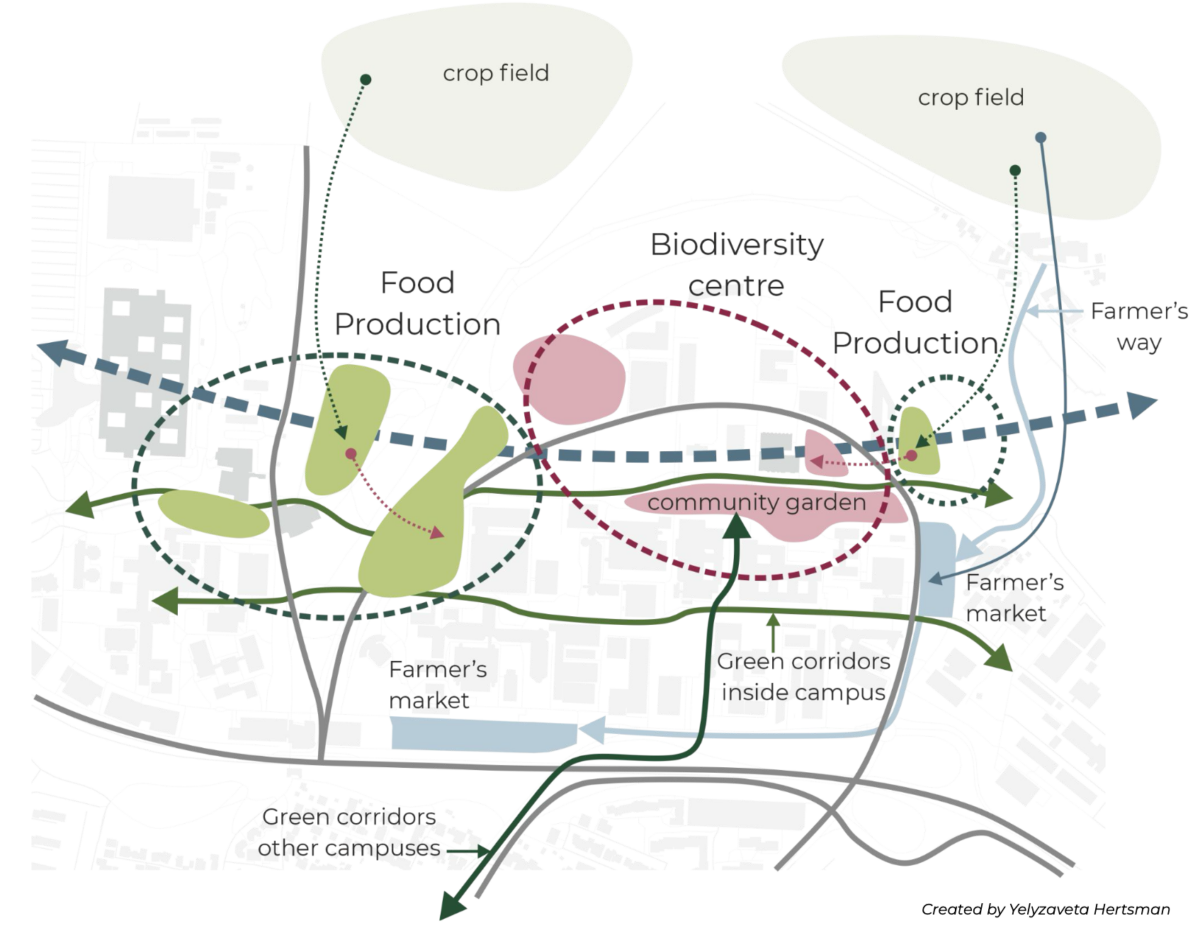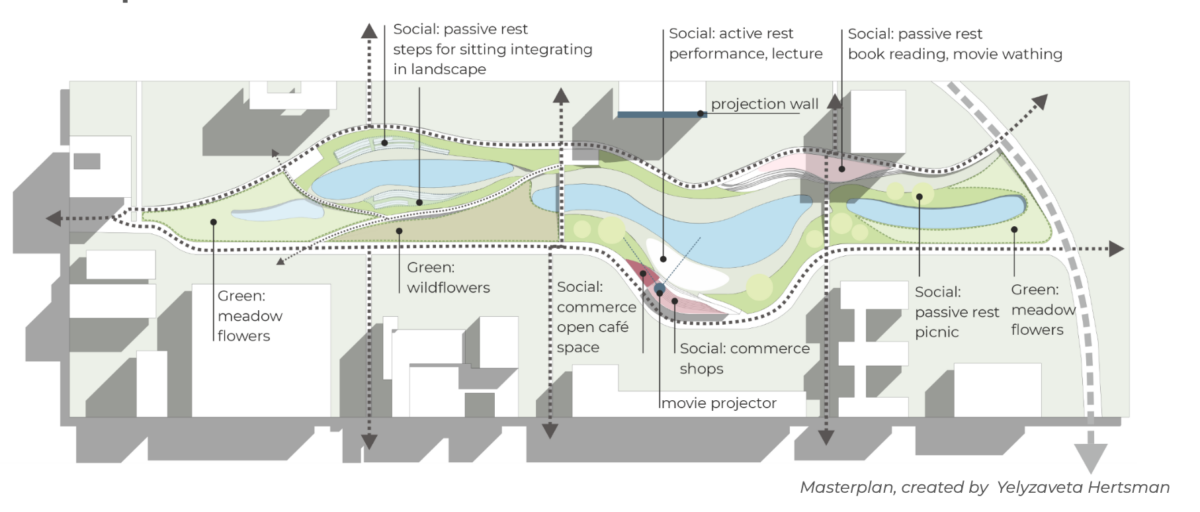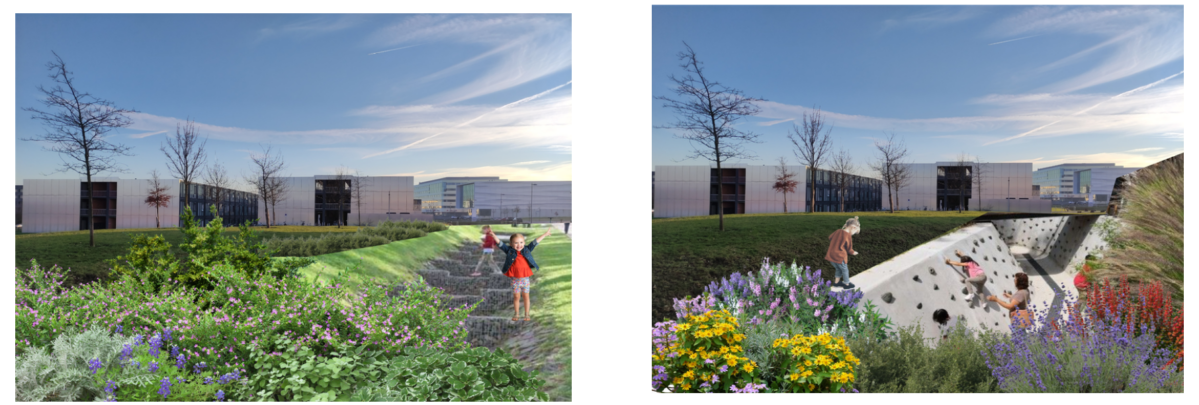CULTIVATING BIODIVERSITY : biome and food
Student Project: Integrated Project I: Climate Change and University Campuses: RWTH Aachen University
Lilan Cubel Gamir, Mahsa Amiri Moghaddam, Yelyzaveta Hertsman and Luna Torres Gómez
Docent: Dr. ir. Ceren Sezer, Dipl.-Ing. Andreas Klozoris
2022 Winter Semester
This project mainly focus on making use of the green areas of the Melaten Campus by promoting biodiversity and creating green connections between the campus, the orchards and the rest of the city. We also want to transform unused green areas into food production sites, ensuring access to healthier local food for the residential areas and the city. And enable the campus community to cultivate innovative ideas, research and actions that advance biodiversity policies and implementation, supporting a positive and nurturing relationship between the natural and built environment.

With the global population projected to reach nearly 10 billion by 2050, sustainable food production and biodiversity are critical for future resilience. At RWTH Aachen University’s Campus Melaten, this project, Cultivating Biodiversity, is designed to address these needs through responsible land use, food production, and biome preservation. The goal is to engage students, staff, and visitors in ecological practices that support local food security while fostering biodiversity.
The project centers on two core elements: sustainable food production and biome enhancement. Our food production strategy employs eco-friendly processes to conserve resources, minimize pollution, and ensure safe food systems. By creating hands-on opportunities for cultivating and consuming locally grown food, the project connects the community to sustainable practices and brings ecological awareness to daily campus life. Meanwhile, the biome strategy develops biodiverse ecosystems that support flora and fauna, emphasizing environmental health and enriching both social and natural interactions across campus.
To make these spaces accessible and engaging, Campus West introduces a functional zoning approach that caters to various users, such as students, office workers, and residents. Noise-buffered areas serve as quiet spaces for study, while noisier zones host short-stay activities like commercial outlets. These intentional zones enhance access, balance the acoustic environment, and encourage community interaction. With green-blue corridors, accessible courtyards, and natural landscapes, Cultivating Biodiversity envisions a campus that blends sustainable food production with an active, biodiverse ecosystem, promoting a resilient and connected community.



